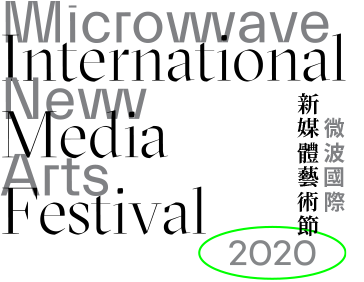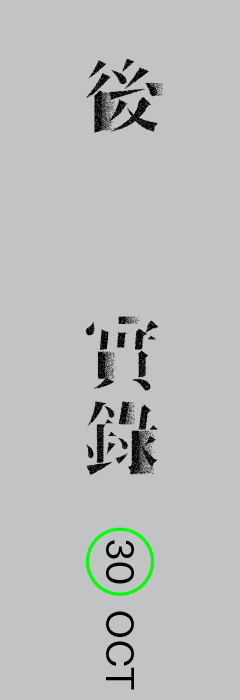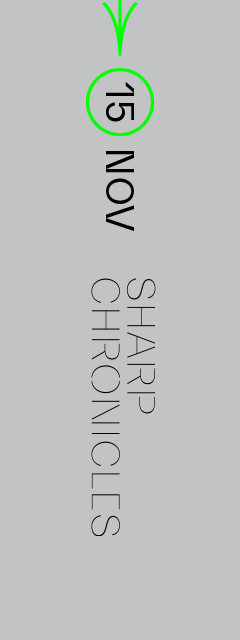







In 2019, the world-famous contemporary art award Turner Prize made a historic, record-breaking decision, announcing for the first time that all four short-listers were winners of the prize. The decision was made after all four finalists, after agreeing among themselves, appealed to the judges for wanting to share the prize together on the ground of commonality, multiplicity and solidarity. Reading the news, the world seems to become a little bit different. Everything taken for granted can be overthrown once you adopt another perspective. Yet, overthrowing one perspective does not necessarily mean assuming an opposite position, it just means unlocking another door. The consensus reached by the four artists also achieves another artistic purpose. Despite focusing on different topics, their works share the intention to convey a symbolic gesture of cohesion. The award itself provides a platform for ethnic minorities to voice up and life in the past is a work of art as well as a gesture of art. In fact, our every word, our every action is an art in itself. Lawrence Abu Hamdan, one of the awardees, was commissioned by Amnesty International and Forensic Architecture to interview the inmates at Saydnaya military prison. With the technique of “echo profiling”, he replayed an array of echoes to help witnesses recall parts of their memories in the prison, remap the main structure of the jail, restore and delineate the archetype and details of the prison with the descriptions of sound. The second door is open to show another facet of media art. Apart from communicating messages, documenting evidence, researching and awakening, it opens the possibilities of tracing and pursuing the truth. Because media art is not only about the practice of creative ideas, but is also characterised by science and technology. This year’s curatorial theme departs from this intention. When, in our daily life, a wealth of information exists on the internet in the form of documentation, we ride on some critical discussions and navigate between the threads of media art. Through which, we allow as many possibilities as possible and reject any certainty to weave together our “Sharp Chronicles.”
Founded at Goldsmith, University of London in 2010, “Forensic Architecture” consists of different professionals including architects, filmmakers, scientists, and software developers. The diverse team of spatial investigators is dedicated to looking into cases of state violence and violations of human rights around the world with the use of architectural techniques and technologies, alongside interdisciplinary approaches such as animation, 3D modeling, interactive map to visualise information for evidence. Their exhibit “Triple-Chaser” was commissioned by the 2019 Whitney Biennial to analyse tear gas grenades manufactured by the Safariland Group, which was owned by Warren B. Kanders, the vice-chair of the board of trustees of the Whitney Museum of American Art. Presented in the form of video installation, the work explains how the team used machine learning and synthetic image generation to recreate photorealistic environments and examine grenades produced by the Safariland Group with millions of photos taken by protesters, activists, and their allies. It has truly transcended the framework of traditional art and conducted an “interdisciplinary investigation” to collect evidence while exploring the meaning of art and the possibilities of “interdisciplinary” in a public display. In response to the possible pursuit of “truth” set out by the theme of this year’s festival, “The Whole Truth” was created by sound artist Lawrence Abu Hamdan, one of the awardees of the 2019 Turner Prize. In the hands of audio technology, “The Whole Truth” is an audio documentary that explores the “lie detecting technology” and the arbitrary impetuousness in its contemporary application.
In the face of “truth”, what are the elements that constitute technology and humans? When people are spectators or participants in present reality, will our “digestion”, “cognition”, “forwarding”, “dissemination” change the world in a siege of information, like the butterfly effect? In this light, there is no “truth” to the “truth”, not even a way to build it. Tactical Tech, an art team who believes that digital technology can contribute to a fairer, democratic, and sustainable society, use survey results to create practical solutions to materialise their belief. Their touring project “The Glass Room (Misinformation Edition)” is a collaborative project developed from their interactions with the public. What happens when people are increasingly dependent on social media and the internet for nearly all information? What information do people see, and what do they miss? And what can they do if they can’t be sure? These questions that are often on people’s minds are explored and practised in the project. Remember – despite the information explosion, everyone has his or her self-awareness to debate and distinguish what is trustworthy and what is not. In the grey area, “understanding” is allowed. Through the lens of individual analysis, we can then understand the operations of social media or even the media strategies of internet stakeholders and translate information into something we can hold onto. Knowing and understanding more is anyway better than “seeing” with your eyes closed. Speaking of audience participation, another exhibiting team Critical Art Ensemble departs from the concept of “triage”, a fundamental organising principle that determines who is treated and who is given up in a catastrophe. Such administration of life and death that is highly relevant to the year 2020 can also apply to environmental issues. How do people take part in the ecosystems? Inviting the public to participate, this experimental work triggers so many questions. Considering the close relations between humans and water, how can resources and facilities be assessed in a displaceable manner? Are there any other possibilities outside of our current reality?
Between truth and fabrication, the virtual realm does not necessarily mean the absence of truth. “Don’t Follow the Wind” is an on-going project about the exclusion zone of the Fukushima Daiichi nuclear disaster developed by a group of international curators and artists since 2015. The exhibit, first set in the forbidden zone where no one could enter, draws on the invisible existence characteristic of radioactivity. “A Walk in Fukushima” is a virtual reality installation that takes the audience into the exhibition located in the exclusion zone, to comprehend the world between the seen and unseen of what was actually experienced by local residents. As Taiwanese artist Tao Ya-Lun says, reality is what continues to exist even after you stop believing in it. It exists independently of your thoughts. Tao’s two virtual reality works “Wandering Ghost No.5” and “Technological Totalitarianism” see how the spectator’s body turns invisible or becomes virtual flesh under technology's thumb, through which the reality and everything in it is conceived in a constructed scenario. Everything is ineluctable, everything is everywhere, despite the virtual identity and form enabled by technology.
In response to the festival’s theme, another door opens to the Project Room Exhibition – “About Life and Death”. Daily life is, in fact, on the road between life and death. The curator departed from four original texts. The exhibition space is transformed into a female writer’s room by various images developed through visual creations by artists Joe Fang and Chung-Lun Wu, interactive installations by Jason Lam, spatial design by art director Jean Tsoi, and the original score composed by sound artist Edward Chiu. Audiences can participate on-site or online to navigate the story world constructed by multiple media. Perhaps a room of one’s own is about witnessing every moment within four walls. Spectators can be led to explore their inner selves when experiencing the exhibition, since everything is, as mentioned, ineluctable and everywhere. The English title of the exhibition is “Sharp Chronicles.” If we want to compile a chronicle of major events, how should every step, every arduous mile taken in view of worldly propositions be recognised and recorded? There is no answer, there are infinite possibilities, different pathways in and out, when you close your eyes. As the father of modern Chinese literature Lu Xun says, “There was never a road, but when many people walk on it, the road comes into existence.” Let’s walk on.
一開始當然是因為對真相追尋的決心與好奇而引發的
活在這現代社會,資訊在每天睜開眼便如空氣般包圍著自身,人們無從逃避並日漸學著與之相處,然而這種相處應成習慣還是說可以被視為另類的探索門兒?
2019年世界著名的當代藝術大奬 — 透納奬出了一則顛覆過去的新聞,四名入圍者共同獲奬,創下歷史中的首個紀錄;原委是四名入圍者主動向大會呼籲,希望評審能理解基於「共通、多樣且團結一致」(commonality, multiplicity and solidarity)的理由,從而促成最終結果由四位入圍者共同得奬的協議。
讀著新聞,這世界仿彿有點不一樣了,當一切以為理所當然的原來轉個角度便可以推翻,推翻也不一定等於站在對面岸,代表的可以是開啓另一道大門。
這道協議達至另一個藝術目的,即便四個人的作品議題不一,共同取向則是設法傳達凝聚的象徵姿態(symbolic gesture of cohesion),奬項本身就是為少數族裔發聲的平台,是故生活是藝術姿態是藝術我們的一言一行都是藝術。其中一名獲奬藝術家是勞倫斯.阿布.哈姆丹(Lawrence Abu Hamdan),他曾經受國際特赦組織及「法證建築」(Forensic Architecture)的委託,採訪敘利亞賽德納亞軍事監獄(Saydnaya)的囚犯,及後他運用了「回聲技術」,通過播放不同的回聲幫助證人恢復監獄的部份記憶,用以判斷監獄的主要結構,以及通過聲音的描述還原並繪製出監獄的原型與細節。第二道大門又打開了,這讓人們看見媒體藝術的另一面向,不單止是傳遞訊息、留存憑證、研究儆醒,還有的是追蹤與找尋真相的可能性,因為媒體藝術不獨指涉創意慨念的實踐,也同時具有科學與科技的特性。今年藝術節主題就是以這個意向(intention)出發,在無數資訊以紀錄形式存在於互聯網上的日常,鋪墊一次尖銳的探討,遊走在媒體藝術的鋼索上,沒有必然只有可能性,編織一部《後實錄》。
一開始提到的「法證建築」,於2010年成立,是倫敦大學金史密斯學院所成立的空間調查團隊,團隊包括了建築師、電影人、科學家以至軟件開發工程師等。他們以建築學作為切入點,調查發生在世界各地的暴力犯罪以及侵犯人權行為,運用跨學科的方式去製作動畫、三維模型、交互式地圖等,致力於案件調查過程中提供可視化的信息作為證據。是次參展的作品《三重追蹤》,是團隊受惠特尼雙年展2019的委託去分析有關惠特尼美國藝術博物館的董事會副主席沃倫・坎德斯所持有的沙法利蘭集團所製造的催淚瓦斯使用的情況。作品最後以錄像裝置的方式去呈現,解說著團隊如何使用機器學習、合成影像衍生以及透過逼真的照片模擬的方法在網絡上數百萬張由抗爭者、社運人士及其他盟友所發佈的圖像進以檢測集團製造的催淚罐子。作品超越傳統藝術的框架,真正以「跨界」出發,他們的作品以「調查」(investigation)著稱,可存證也可公開展出,探討著藝術的意義本身,並提出更多「跨」的可能性。繼而回應著藝術節的主題,建基於在探討「真相」的可能性之下,另一件作品《事實之全部》由聲音藝術家勞倫斯.阿布.哈姆丹(Lawrence Abu Hamdan),亦即是早前提及2019年透納奬的得奬者之一。擅長以聲音技術進行創作,《事實之全部》是一則聲音紀實,探索著「測謊」之說,有關其當代應用的獨斷肆意性。
在「真相」跟前,究竟科技與人是怎麼的元素?人們作為觀眾或現世現實的參與者,在信息全面包圍的當下,我們的「消化」、「認知」、「轉載」、「傳播」會否像蝴蝶效應般連鎖改變世道?如此「真相」永沒「真相」,連建構的門兒都沒有。藝術團隊「戰略技術」(Tactical Tech)篤信數位技術可以為更公平、民主和可持續性發展的社會作出貢獻;為了實踐這個信念,他們使用調查結果創建實用的解決方法。他們的世界巡迴項目《玻璃房間:錯誤信息版》正正就是他們與大眾互動下的合作計劃;當人們日漸依賴社交媒體和網絡獲取幾乎所有的信息之時,究竟狀況怎麼樣?人們看到什麼、發現什麼又錯過了什麼?如果無法肯定,那大眾又可以或該做什麼?這些經常出現在大眾腦海的問題,在項目中得以探討與實踐。記住,也許信息爆炸,但每一個人都可以有自主意識,在分辯可信與不可信之間,有一片灰色草園,而可以做的就是「了解」,清楚社交媒體的運作模式,甚至是網路上影響者所運用的媒體策略,透過個人的分析能力,一切才會化成自己口袋裡的資訊。知道多一點,總好過閉上眼繼續「看」。談到觀眾參與,另一參展團隊「批判藝術組合」(Critical Art Ensemble)從「分流」這個概念出發,談在大型傷害事件中的生死命題,誰先被處理誰先被放棄?這個命題在2020年幾近貼身,如果將之用於環保題目,人們又是如何對待生態系統的呢?無數問號跟隨,這作件品就是一場邀請公眾參與的實驗,在人類與水的密切關係跟前,資源與措施可以如何置換判斷?一切還有沒有別的可能性?
在真與假交錯之下,走進虛擬國度不等於看不見真處;《逆風而行》是一個發生在日本福島核事件禁區之內的項目,由2015年起透過一群國際策展人及藝術家的持續性項目。展覽本身在無人能進的禁區之內,取自輻射的特性,存在但不被看見,是次參展作品《福島散步》是虛擬實境裝置,把觀眾帶進禁區內的展覽,遊走在當地居民的真切發生過的事件中,在看見與不看見間理解空間裡的作品,作品、空間、觀眾的虛擬參與以及真實發生過的事件交織成簇新的體驗。到底真實與現實之間的差異是什麼?藝術家陶亞倫所言,現實是當你停止相信它以後,它卻依然存在,它是獨立存於你的思維之外。透過兩件虛擬實境的作品《徘徊的幽靈No.5》及《數位威權》,在科技的加持下觀者的身體無形又或道是成為虛擬的肉身,在建構的場景下體現著或在現實世間的一切,所以即便科技予人虛擬的身份或形態,所有都是無從躲避,一切無處不在。
回應著藝術節的主題,另一道大門啓於Project Room實驗L場:生死牆之中;生活其實就在生與死之間的道路上。策展人以四個原創文本出發,視覺藝術家方序中與吳仲倫以不同的視覺創作建構影像,經由數位藝術家林志輝的互動設計,透過美術指導蔡慧妍的空間設計配合聲音藝術家趙浩權的原創互動音樂,展場化成一個女作家的房間,觀眾透過線上與線下的參與,遊走在連串媒體下建構的故事世界。也許,一個人的房間就是與四堵牆一起見證日月,觀者的經驗體現對世界也是對自身的探索過程,如前所說一切無從躲避也無處不在。這部《後實錄》的英文譯題是「Sharp Chronicles」,如果要造一部編年史大事紀,人類在面對世界命題下的一步一艱辛應該如何被存取記認?這裡沒有答案,但閉上眼這裡有的是無限可能性,無論在網裡網外都充滿著不同的分岔口;此以魯迅名言作結:「世上本沒有路,走的人多了便成了路」,走吧。